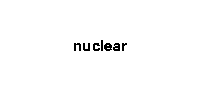

of Neutron Deficient Nuclei |
In nuclear structure physics we constantly want to probe the structure of nuclei further and further from stability. These nuclei are much more difficult to populate than nuclei nearer to stability. The study of very neutron deficient nuclei requires advanced detector systems that can consist of:
The
GAMMASPHERE detector array
(shown below) is a detector system based in the
United States of America. It is a device which consists of approximately
100 high purity germanium (HPGe) detectors. The detectors are mounted
in a spherical
(4 )
configuration completely surrounding a target. The
primary function of the array is the detection of
)
configuration completely surrounding a target. The
primary function of the array is the detection of
 -rays that are emitted
following a nuclear reaction.
-rays that are emitted
following a nuclear reaction.

A large contribution to the Doppler broadening of the
 -rays comes from
the size of the detector opening angle
-rays comes from
the size of the detector opening angle

 ,
with the effect maximised in
detectors at 90 degrees (
,
with the effect maximised in
detectors at 90 degrees ( = 90)
to the beam direction.
= 90)
to the beam direction.
The Doppler Broadening equation has important consequences for segmented germanium detectors:
 E
E = E
= E ( 0 ) (v/c) sin
(
( 0 ) (v/c) sin
( 

 )
)
The GAMMASPHERE array contains electrically segmented HPGe detectors at angles around 90 degrees to the beam direction. The segmentation effectively splits the detector into two halves, reducing the opening angle of the detector. The Doppler broadening of the detector is then reduced.
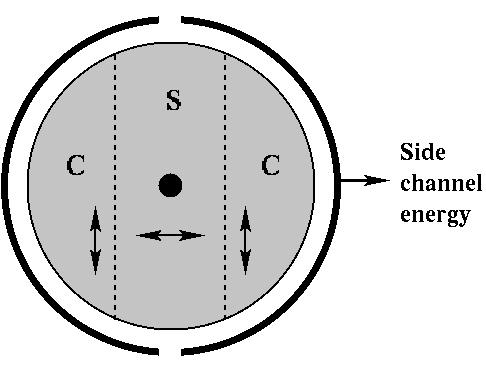
The angle  can be better defined reducing
can be better defined reducing

 by using a segmented detector.
by using a segmented detector.
The ratio R of the side channel energy to the high resolution energy gives:
Linear Polarisations can be deduced.
The
MICROBALL detector system
is an ancillary detector designed for
use with the GAMMASPHERE array. It consists of 95 CsI scintillator
detector units completely surrounding the target in a
4 configuration. It
is mounted within the HPGe detectors and so much closer to the target
which is mounted within the CsI detectors. The MICROBALL is used to
detect and discriminate between protons and alpha particles. Particle
discrimination is achieved by using Pulse Shape Discrimination (PSD)
and Zero Crossing Time (ZCT).
configuration. It
is mounted within the HPGe detectors and so much closer to the target
which is mounted within the CsI detectors. The MICROBALL is used to
detect and discriminate between protons and alpha particles. Particle
discrimination is achieved by using Pulse Shape Discrimination (PSD)
and Zero Crossing Time (ZCT).
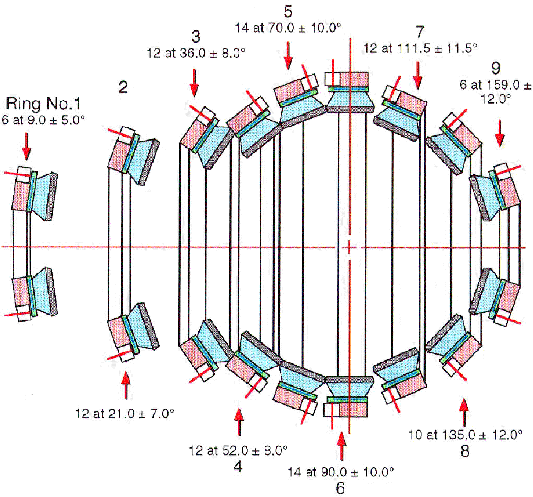
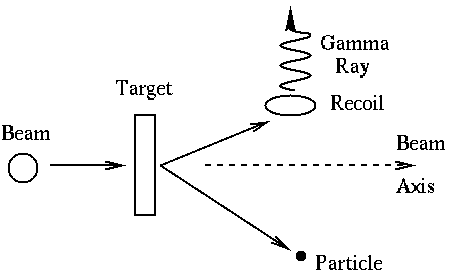
The MICROBALL also allows the Doppler broadening of
 -rays to be
reduced. This is afforded by kinematically reconstructing each event. The
direction of the recoiling compound nucleus can be reconstructed because
the MICROBALL measures the energy and momentum of the protons
and alpha particles that are emitted immediately following a nuclear
reaction. The reduction in the peak Full Width Half Maximum (FWHM)
is significant.
-rays to be
reduced. This is afforded by kinematically reconstructing each event. The
direction of the recoiling compound nucleus can be reconstructed because
the MICROBALL measures the energy and momentum of the protons
and alpha particles that are emitted immediately following a nuclear
reaction. The reduction in the peak Full Width Half Maximum (FWHM)
is significant.
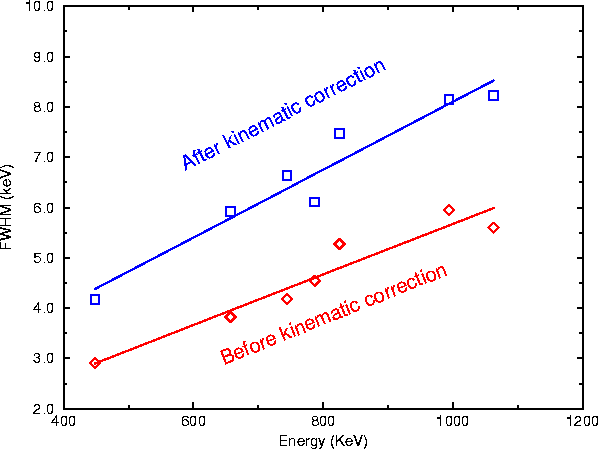
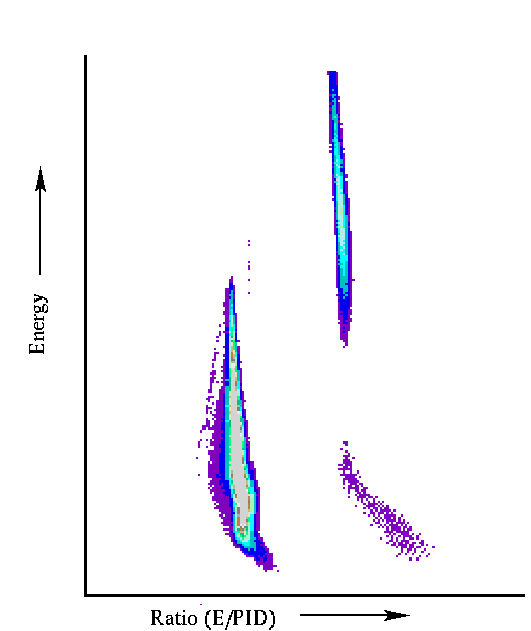
Neutron detectors can be used as an important reaction channel selection device.
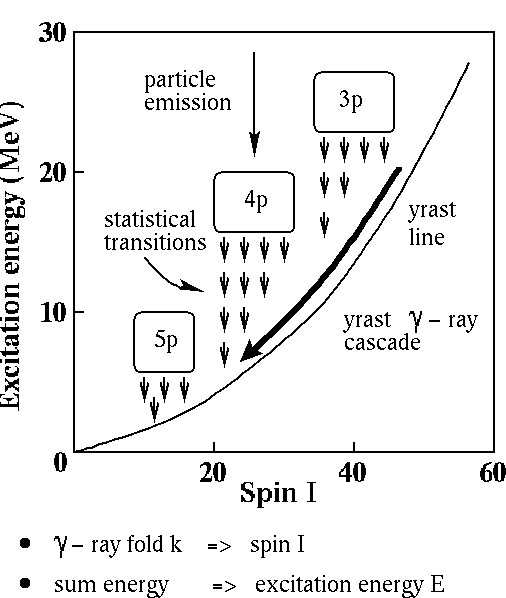
The neutron detector system that was used to augment the
GAMMASPHERE array consisted of 15 NE213 liquid scintillator
neutron detectors; these were chosen because NE213 provides good
n- discrimination. The neutron detectors were mounted at forward angles
capturing the neutrons produced in the compound nucleus reaction.
Neutron-
discrimination. The neutron detectors were mounted at forward angles
capturing the neutrons produced in the compound nucleus reaction.
Neutron- discrimination was achieved
by using Time of Flight (TOF)
and Pulse Shape Discrimination (PSD).
discrimination was achieved
by using Time of Flight (TOF)
and Pulse Shape Discrimination (PSD).
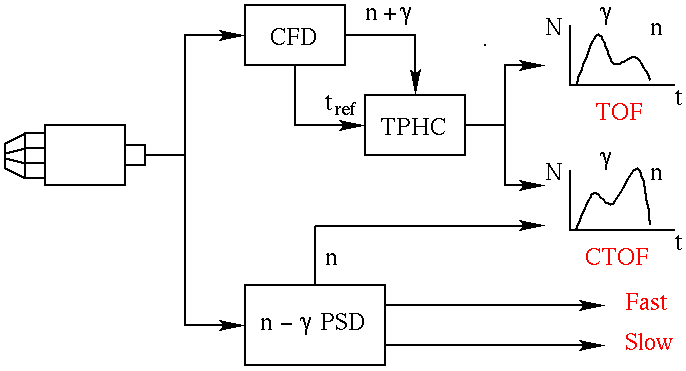
 ).
For neutrons the
contribution to the total light signal is greater than for
).
For neutrons the
contribution to the total light signal is greater than for
 s. An example
of the Pulse Shape Discrimination method is shown.
s. An example
of the Pulse Shape Discrimination method is shown.

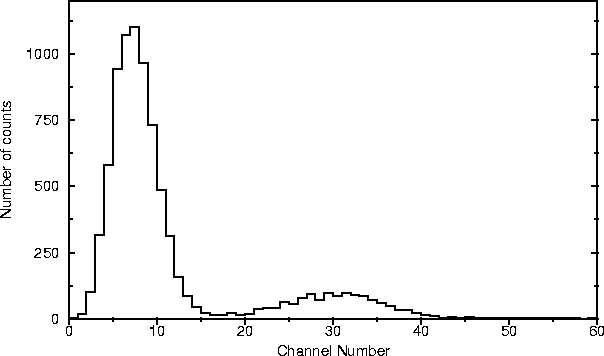
 discrimination than PSD.
Neutrons go slower than
discrimination than PSD.
Neutrons go slower than  s so they
arrive at the neutron detectors after the
s so they
arrive at the neutron detectors after the  s.
For low energy neutrons TOF discrimination is preferable.
s.
For low energy neutrons TOF discrimination is preferable.
Last modified: 4 March 1998
Written by Andrew Boston, ajb@ns.ph.liv.ac.uk